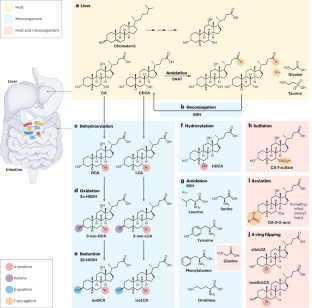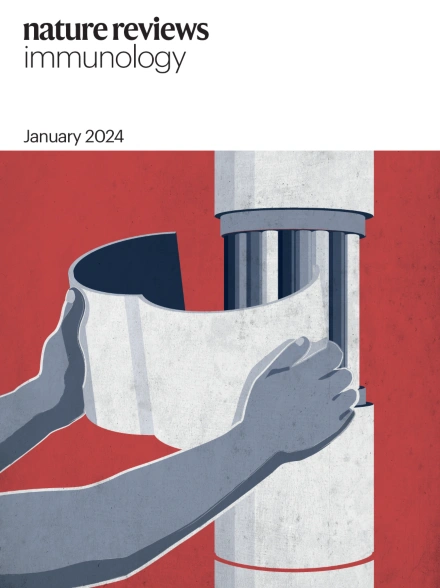How bile acids and the microbiota interact to shape host immunity
IF 67.7
1区 医学
Q1 IMMUNOLOGY
引用次数: 0
Abstract
Bile acids are increasingly appearing in the spotlight owing to their novel impacts on various host processes. Similarly, there is growing attention on members of the microbiota that are responsible for bile acid modifications. With recent advances in technology enabling the discovery and continued identification of microbially conjugated bile acids, the chemical complexity of the bile acid landscape in the body is increasing at a rapid pace. In this Review, we summarize our current understanding of how bile acids and the gut microbiota interact to modulate immune responses during homeostasis and disease, with a particular focus on the gut. Here, Raffatellu and co-workers discuss our growing understanding of how primary bile acids (which are cholesterol-derived molecules synthesized in the liver) and secondary bile acids (which are primary bile acids that have been microbially modified) shape immune responses in health and disease, with a particular focus on bile acids and intestinal immunity.



胆汁酸和微生物群如何相互作用形成宿主免疫力
胆汁酸对宿主的各种过程产生了新的影响,因此越来越多地成为人们关注的焦点。同样,负责胆汁酸修饰的微生物群成员也日益受到关注。随着最近技术的进步,微生物共轭胆汁酸的发现和持续鉴定成为可能,体内胆汁酸化学结构的复杂性也在快速增加。在这篇综述中,我们将总结我们目前对胆汁酸和肠道微生物群如何在体内平衡和疾病期间相互作用以调节免疫反应的理解,并特别关注肠道。
本文章由计算机程序翻译,如有差异,请以英文原文为准。
求助全文
约1分钟内获得全文
求助全文
来源期刊

Nature Reviews Immunology
医学-免疫学
CiteScore
93.40
自引率
0.40%
发文量
131
审稿时长
6-12 weeks
期刊介绍:
Nature Reviews Immunology is a journal that provides comprehensive coverage of all areas of immunology, including fundamental mechanisms and applied aspects. It has two international standard serial numbers (ISSN): 1474-1733 for print and 1474-1741 for online. In addition to review articles, the journal also features recent developments and new primary papers in the field, as well as reflections on influential people, papers, and events in the development of immunology. The subjects covered by Nature Reviews Immunology include allergy and asthma, autoimmunity, antigen processing and presentation, apoptosis and cell death, chemokines and chemokine receptors, cytokines and cytokine receptors, development and function of cells of the immune system, haematopoiesis, infection and immunity, immunotherapy, innate immunity, mucosal immunology and the microbiota, regulation of the immune response, signalling in the immune system, transplantation, tumour immunology and immunotherapy, and vaccine development.
 求助内容:
求助内容: 应助结果提醒方式:
应助结果提醒方式:


